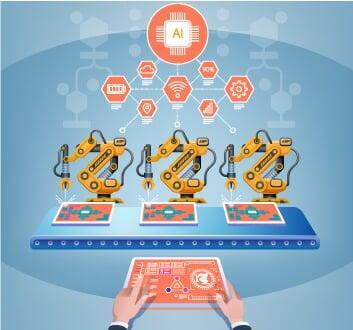2017 State of Manufacturing Technology Survey
According to a survey Plex conducted
Cloud solutions: An integral part of a manufacturer's plans
Experience acceleration in cycle times
When insights are available through cloud-based intelligence systems, it's possible to receive information quicker regarding the amount of time elapsing from the time of order to when the finished product goes into inventory. When companies have more significant insights into this information, they experience quicker cycle times.

Where AI Comes Into the Manufacturing Process?
Because it's possible to develop factory robots with applications, like machine vision that is more sensitive than the human eye, adding AI allows us to interpret these images. In doing so, the use of AI can create safer working conditions on the factory floor because robots can be trained to avoid danger and disruptions.
IoT
AI
PowerBI
Dynamics 365
Azure
Office 365
Manufacturers Offer Consumers One-on-One Help
When manufacturers can offer their customers help one-on-one because they can know, as well as deliver what they want, this puts them better achieve customer satisfaction.
Using connected manufacturing allows manufacturers to have real-time insights into their customer's behaviors.
They'll also have real-time insights into the customer's products and services, as well. Each of these efforts helps give manufacturers a competitive edge.
Will You Experience a Reduction in Staff?
Is it possible that the need for less staff will be the result of connected manufacturing? With the help of an integrated system, it's possible that some of these processes may require less staff on the shop floor.
The result is the creation of a centralized system that can deliver better results for a work schedule that's complex. However, to make this centralized system feasible and functional, the onboard staff must have the correct skill set.
Because some of these technologies are complex and require steady hands for monitoring, companies must have a team of dedicated personnel utilizing these practices.



Why Connected Manufacturing?
The longer you wait to embrace connected manufacturing, the further behind your company will be behind the rest.
The more you learn about this way of integration, though, the better chance you'll have at embracing this business strategy.
Rather than experiencing errors or down-times, or other frustrations on the production floor, it's better to make adaptations with the shifting manufacturing industry.




